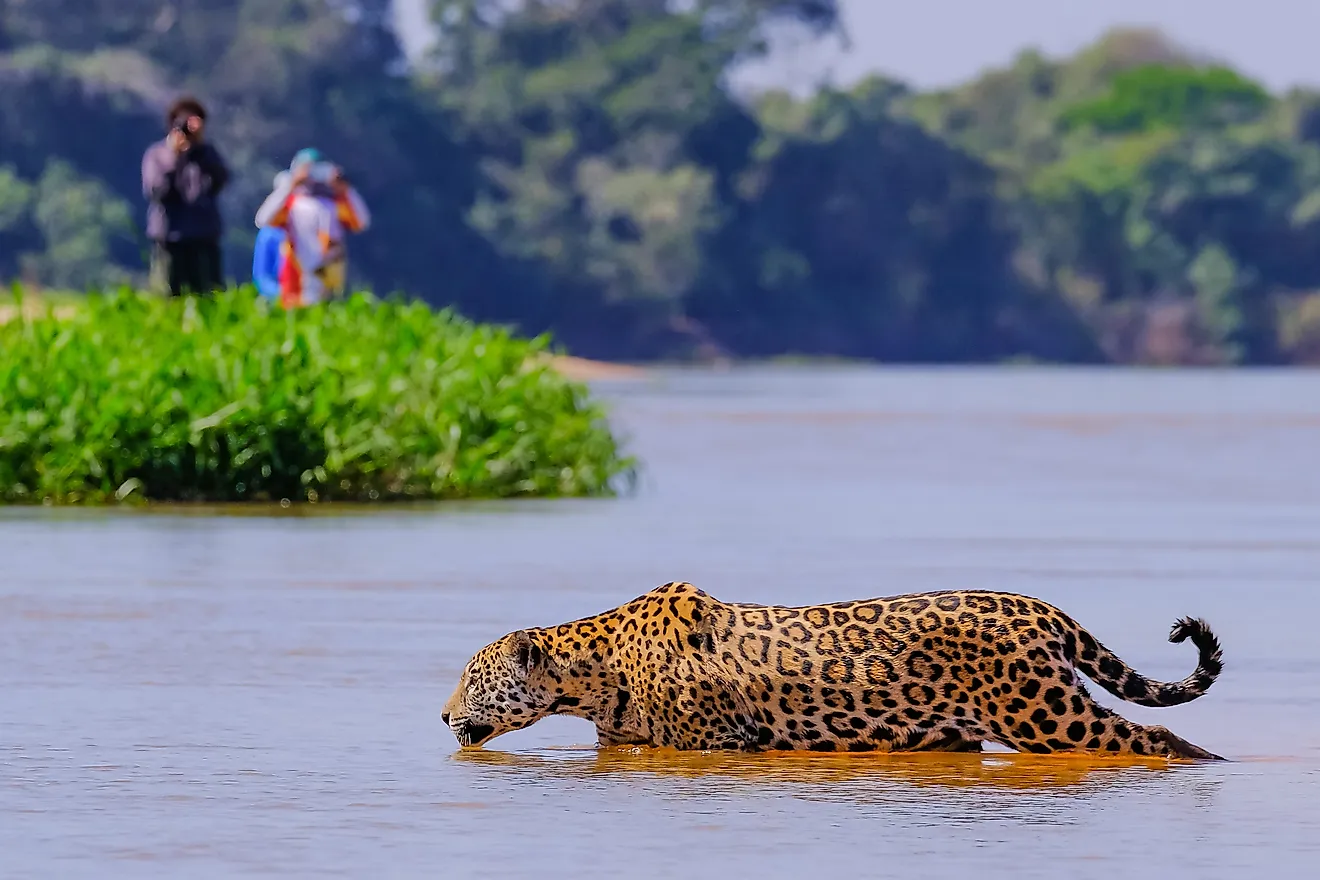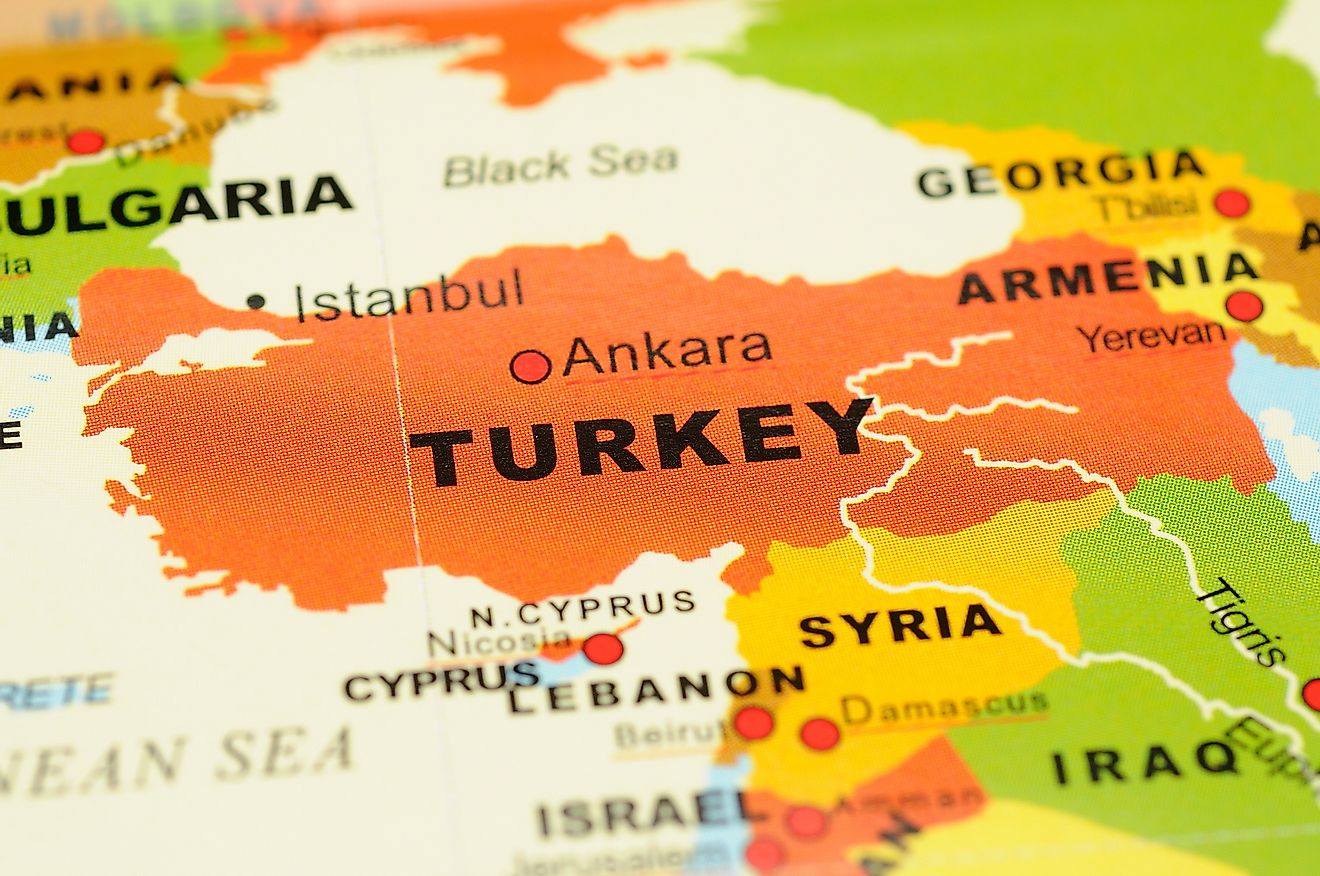The Kyzylkum Desert
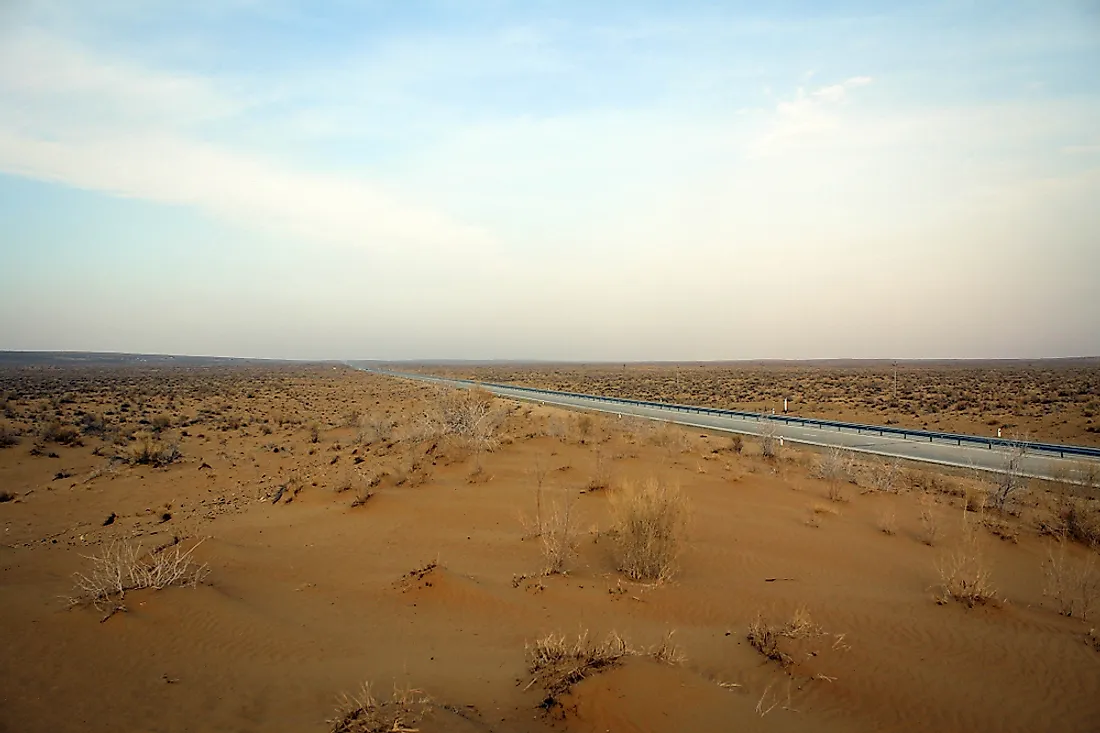
- The Kyzylkum Desert’s continental climate results in large temperature fluctuations. Temperatures are below freezing in the winter, and reach scorching level in the summer.
- The Kyzylkum Desert contains large deposits of natural gas, turquoise, graphite, marble, and gold.
- The Andronovo people lived in the Kyzylkum Desert as early as the year 2100 BCE; they survived in the harsh climate by raising cattle and living in earth huts.
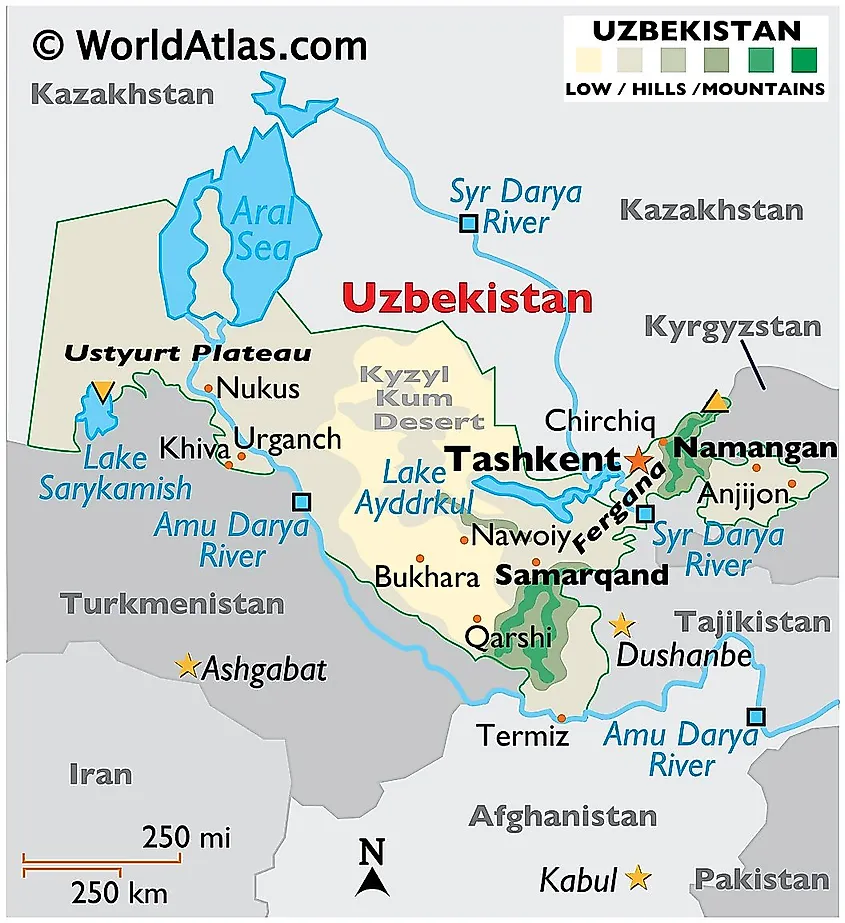
The Kyzylkum Desert is the fifth largest desert in Asia and the 15th largest in the world. The vast landscape stretches across Kazakhstan and most of Uzbekistan. It is notorious for being desolate and unforgiving. Few have attempted to traverse the 115,830 square miles (300,000 square km) of desert.
The Kyzylkum Desert extends between two rivers. To the north you will find the Syr Darya River and in the south lies the Amu Darya River. The Kyzylkum Desert is so large that it is bigger than Ireland, Iceland, or South Korea.
Contents:
Topography Of The Kyzylkum Desert
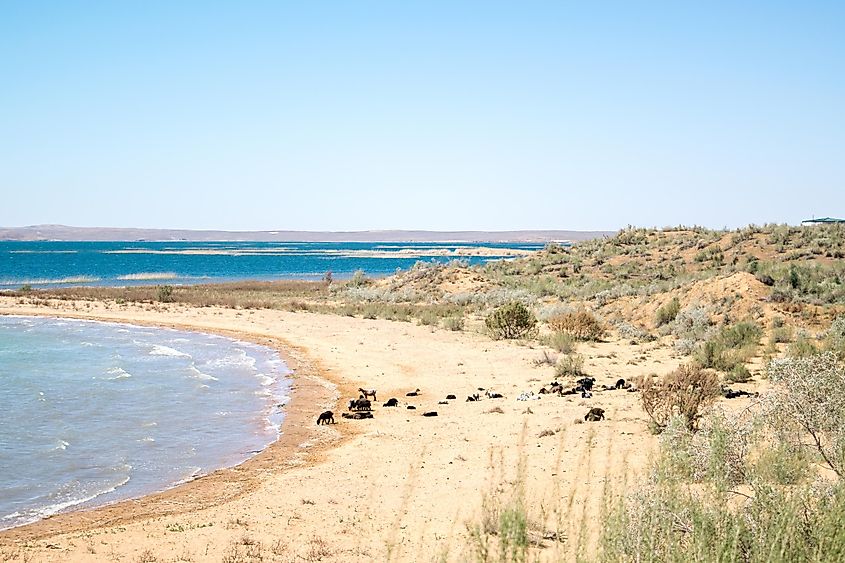
The Kyzylkum desert is famous for its distinctive red sand. The vast majority of the desert is dry and arid, but you may be surprised to learn that the Kyzylkum Desert is home to one of the biggest man-made lakes on Earth. Aydar Lake, which is located in Uzbekistan, is commonly known as "the turquoise sea in the sands." The giant lake is home to a wide variety of fish species and waterfowl. Birds such as herons, gulls, terns, pelicans, and cormorants regularly hunt for fish on the massive body of water. The lake was actually created by accident when Soviet officials attempted to dam nearby rivers to create farmland.
The Kyzylkum Desert has a varied topography. It consists of sloping plains, sand ridges, and mountain ranges. The Bukantau range reaches a height of 2,506 feet (764 m), the Kuljuktau range reaches a height up to 2,575 feet (785 m) and the highest point of the Tamdytau range is 3,189 feet (972 m).
Climate Of The Kyzylkum Desert
The Kyzylkum Desert’s continental climate means the region sees sharply different temperatures in summer and winter. Summers are hot and dry, and precipitation is virtually non-existent in the summer and fall. In fact, the Kyzylkum Desert typically receives between 4 to 8 inches (100-200 mm) year-round. Almost all the rain falls in spring and winter. In the winter, the temperature usually drops below freezing. The average temperature in January is between 32 and 15.8 degrees Fahrenheit (0 to -9 Celsius). Summers in the Kyzylkum Desert are sweltering, and temperatures as high as 118 Fahrenheit (48 Celsius) have been recorded.
Flora And Fauna In The Kyzylkum Desert
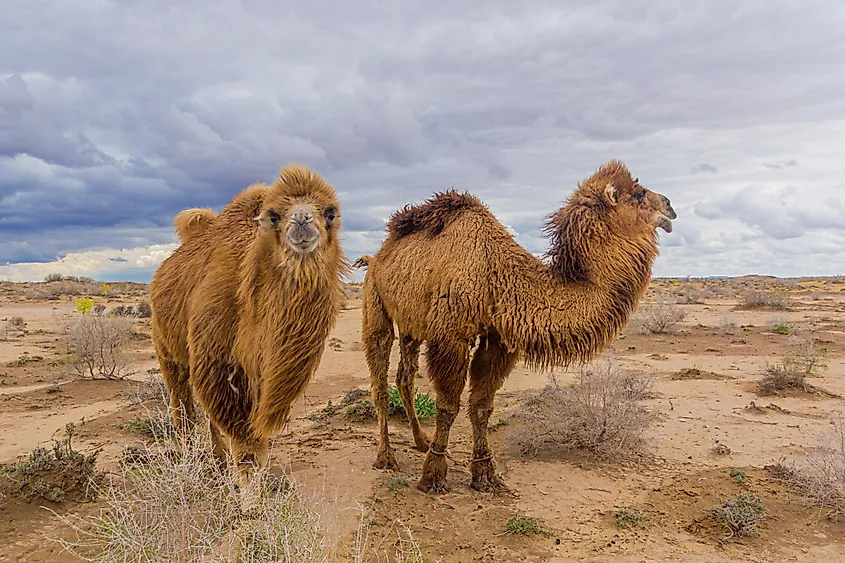
The Kyzylkum desert is filled with a wide variety of plants and animals. Despite the incredibly low precipitation level, many plant species flourish in various regions of the desert. In springtime, wild tulips flourish. Hearty shrubs like saksaul can survive even without fertile soil. Black and white saksaul variants and other shrubs like sagebrush thrive in the desert. Sandsedge creeps up throughout the desert’s sand dunes, and camelthorn bushes dot the landscape. Camelthorn is even used for medicinal purposes in Uzbekistan.
A wide variety of animals can survive in the harsh Kyzylkum Desert ecosystem. Reptiles, birds, and insects are prevalent. Mammals of all sizes call the Kyzylkum Desert home. Most of these mammals are small, but there are some larger mammals that can survive despite the lack of vegetation and water. Jerboas, gerbils, tolai hares, long-clawed ground squirrels, and Aral yellow sousliks survive in the desert by feeding on plants and seeds. Predators like the sand cat, wolf, and corsac fox in turn feed on these smaller mammals. Wolves also feed on larger mammals that live in the desert, such as the goitered gazelle.
The Kyzylkum Desert is filled with numerous caves and grottos in the mountainous regions. Here you will find a wide variety of bat species that come out at night to feast on insects. The vast majority of animals that live in The Kyzylkum Desert are nocturnal. Stink bugs, dung beetles, and a wide array of spiders are some of the insects that you will find in the Kyzylkum Desert. Humans also use this desert as pasture for sheep, camels, and horses.
Historical Significance Of The Kyzylkum Desert
The Kyzylkum Desert has a rich history. Nomadic tribes have lived in the desert for thousands of years, and semi-nomadic communities can still be found throughout the region. According to archeological finds, the Andronovo people lived in the Kyzylkum Desert as early as the year 2100 BCE. They survived in the area by raising cattle on the open plains, and archeological evidence shows that they lived in earth huts. Andronovo warriors originally used weapons made of stone, but they eventually replaced their primitive stone-based weapons with more advanced weaponry made of bronze.
In the Sarmish Gorge in Uzbekistan near the desert, petroglyphs dating back to the bronze age can be found, left behind by the nomadic peoples that roamed the desert over 3,000 years ago.
Natural Resources Of The Kyzylkum Desert
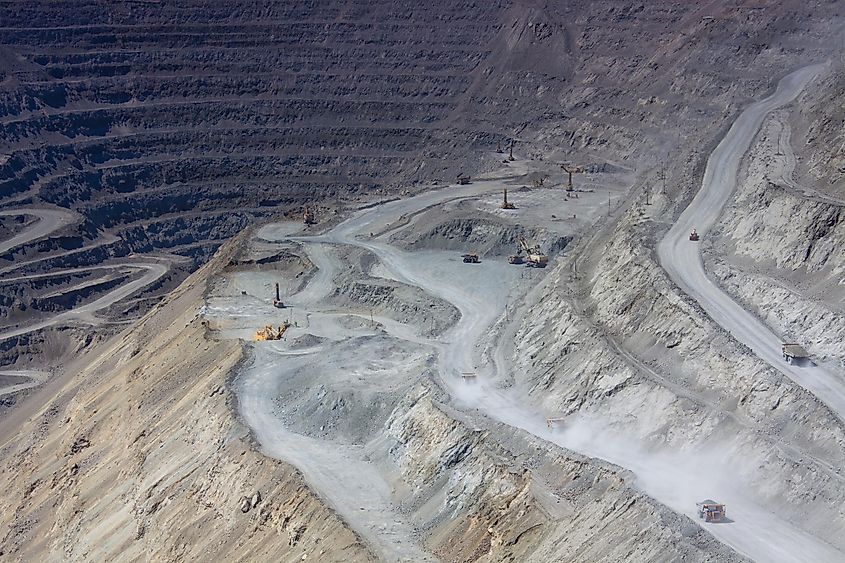
The Kyzylkum Desert may be barren on its surface, but beneath the sand dunes lies a vast wealth of natural resources. The southern region of the Kyzylkum Desert contains large deposits of natural gas. Minerals such as turquoise, graphite, and marble have been found in large quantities in the mountainous regions of the desert.
The Kyzylkum Desert is home to one of the largest open-pit mines in the world. Uzbekistan’s Muruntau gold mine, which is owned by the state-operated Navoi Mining & Metallurgy Combinat, is the largest open-pit gold mine in the world and the fourth largest open-pit mine overall. The mine produces about 38.5 million tonnes of ore per year, and it is estimated that Muruntau has gold reserves totaling approximately 170 million ounces.
The Muruntau gold deposit was discovered in 1958 and surface mining operations began in 1967. Gold mining efforts are expected to greatly increase in the next few years despite concerns about the environmental impact. The Uzbekistan government is spending $3.63 billion in an effort to increase gold output. By 2026, the mine will produce at least 50 million tonnes of ore per year. The mine currently has a depth of 1,853 feet (565 m), and the depth is expected to reach 3,280 feet (1,000 m) once all the gold has been extracted.
